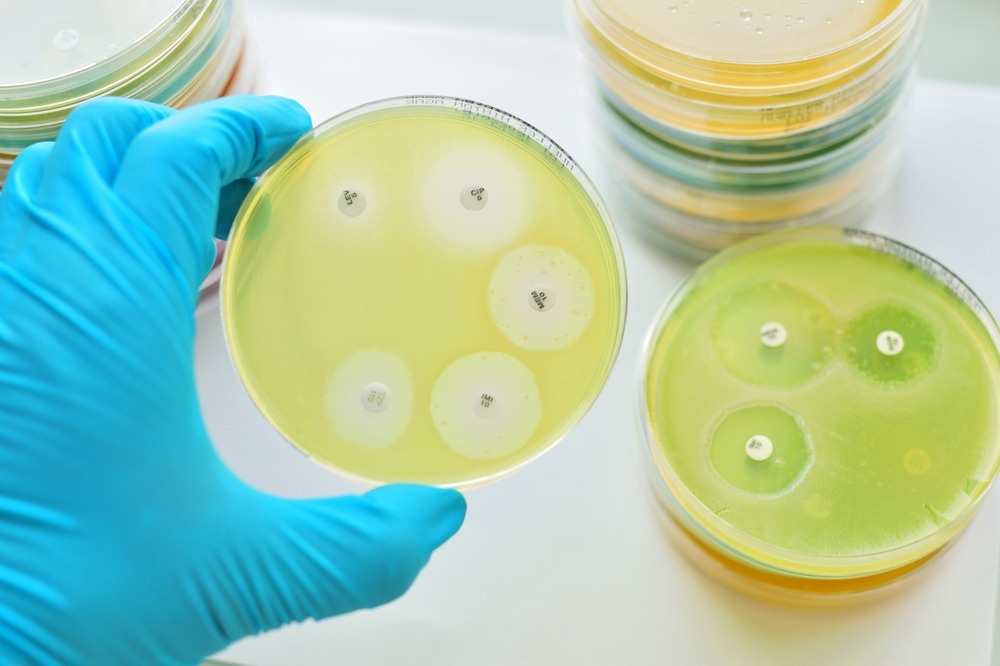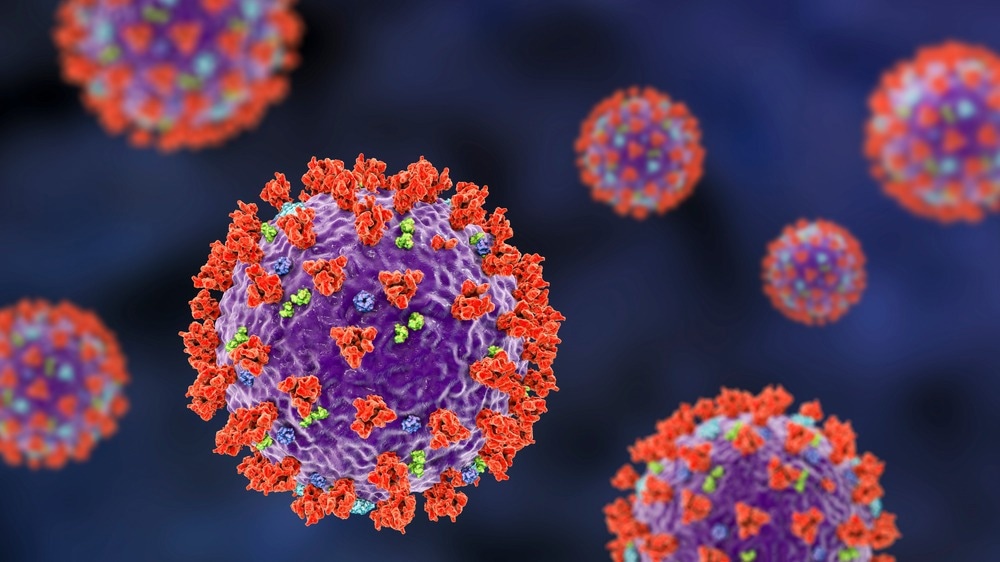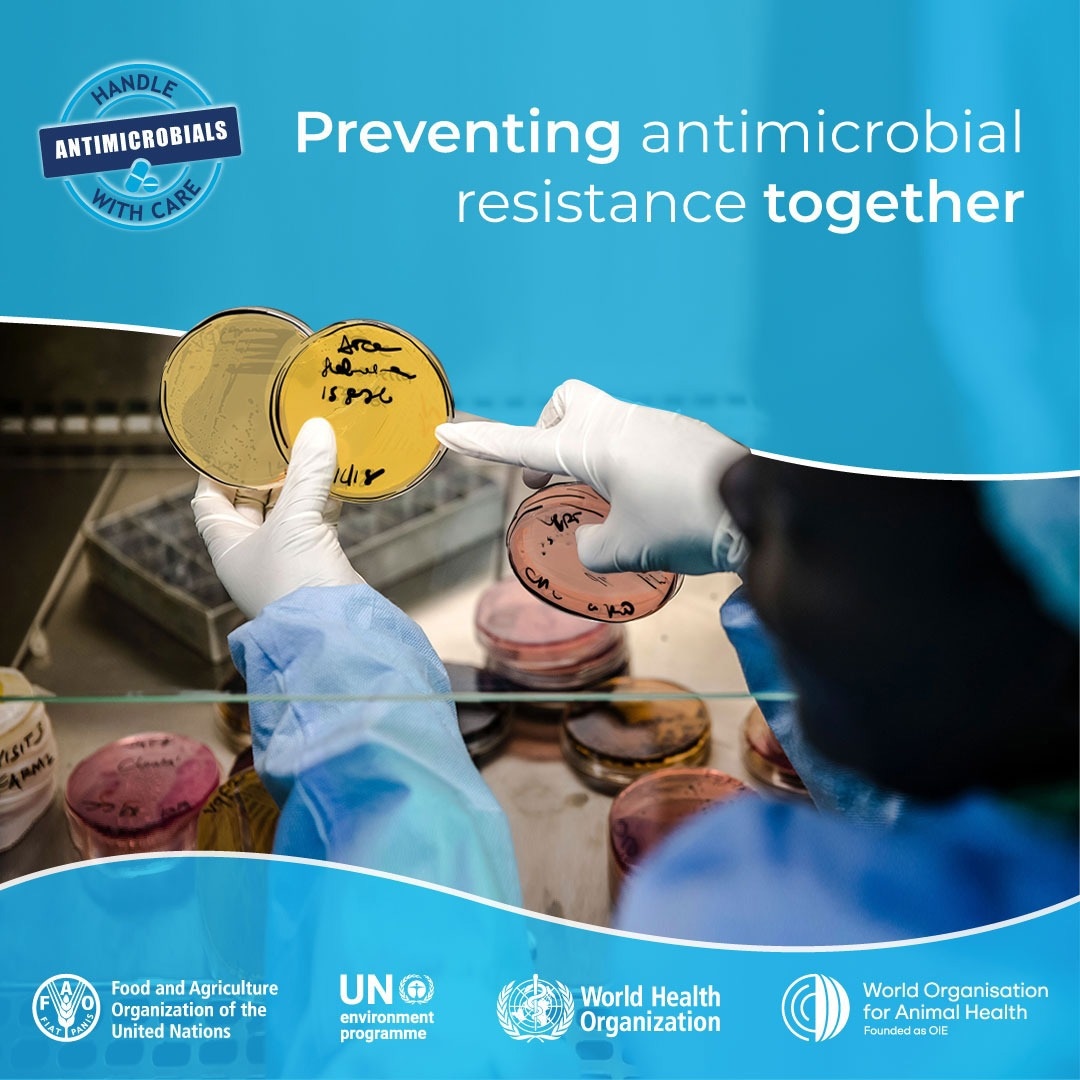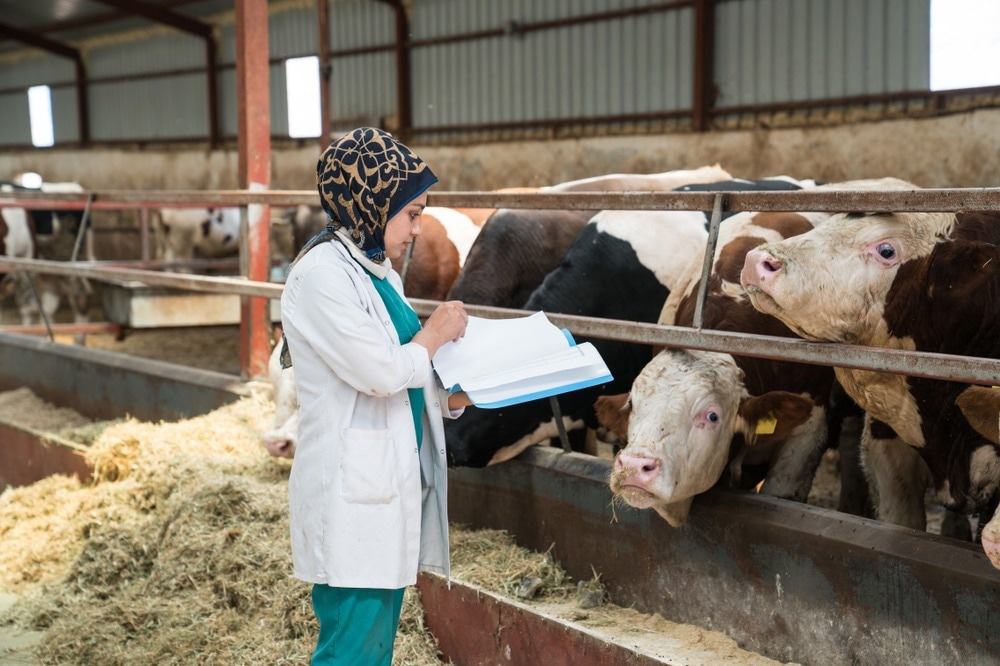My name is Junxia Song. I currently work at the Joint Centre for Zoonotic Diseases and Antimicrobial Resistance at FAO headquarters.
As FAO AMR Focal Point and Head of Unit, I lead the development and implementation of the FAO Action Plan on Antimicrobial Resistance 2021 - 2025, coordinate AMR activities with internal and external partners, and contribute significantly to the Quadripartite collaboration (FAO, UNEP, WHO and WOAH). I also coordinate endemic zoonoses (rabies, brucellosis, zoonotic TB, etc.) at the Centre.
As the senior animal health officer for the FAO, what do you personally believe to be some of the biggest threats to animal health in today's world?
Antimicrobials are one of farming's most important tools for treating infections. Without them, food production will decline. This means less income for households in a vulnerable situation and reduced food security and nutrition. Misuse and overuse of antimicrobial drugs in human medicine, veterinary medicine, and food production have put our future at risk.
Antimicrobial Resistance (AMR) occurs when bacteria, viruses, fungi, and parasites no longer respond to antimicrobial agents. As a result of drug resistance, antibiotics and other antimicrobial agents become ineffective, and infections become difficult or impossible to treat, increasing the risk of disease spread, severe illness, and death.
The findings of the Global Research on Antimicrobial Resistance study show that drug-resistant bacterial infections contributed to almost five million human deaths in 2019, making AMR a leading cause of death globally. If action is not taken soon to slow the spread of antimicrobial resistance, more and more of the life-saving medicines we rely on to keep our families, animals, and plants healthy will no longer work. This could drive millions more people into extreme poverty, hunger, and malnutrition.
Good husbandry practices, biosecurity, sanitation, hygiene, vaccination, and other infection prevention measures are essential to reduce the need for antimicrobials in animals and antimicrobial pesticides in plants.

Image Credit: Jarun Ontakrai/Shutterstock.com
The World Health Organization has described antimicrobial resistance (AMR) as being one of the top ten threats to humanity. Despite this, the widespread effects of AMR are not publicly understood. As well as its detrimental impact on human health, what effects is AMR having on both animals and the environment?
- AMR is a silent pandemic that has been spreading for decades and was linked to nearly 5 million human deaths worldwide in 2019. Projections for 2050 suggest that drug-resistant infections could be among the leading causes of death, along with pandemics, cardiovascular disease, and cancer, if we do not act now.
- However, the food and agriculture sectors have a crucial role in this global fight against AMR. Antimicrobial use (AMU) is one of the main drivers for AMR. AMU for livestock is expected to continue increasing to keep pace with the growing human demand for animal products. Since the advent of antimicrobials, resistant organisms in livestock have increased exponentially, including in low- and middle-income countries (LMICs).
- The increasing trend in AMR and the emergence of new antimicrobial resistance determinants and genes in terrestrial and aquatic animal production is of concern to producers and human patients, as a fraction of all human drug-resistant infections are also associated with foodborne or animal sources. AMR from animals reaches humans through many modes of transmission, and once an individual becomes a carrier, AMR spreads rapidly within and between communities. Transmission can begin at the farm level and then be carried by animals into the food chain. Resistant organisms can also be introduced during food products' handling, processing, transport, storage, and preparation. AMR can also reach the general population by passing from human and agricultural sources into the environment and into wildlife populations. Humans can be exposed to contaminated water, soil, and agricultural products.
- In addition to the public health issue, there is also a significant dimension to the AMR problem related to the potential ability of AMR to threaten global food security, economies, food systems, and livelihoods.
- Food security: AMR also undermines veterinary medicine, compromising animal production and destabilizes food security. The World Bank has already projected that livestock production in low-income countries could decline by 11 percent by 2050 due to AMR. http://documents1.worldbank.org/curated/en/323311493396993758/pdf/final-report.pdf
- Economies: In addition, projections show a loss of nearly 4 percent of the world's annual gross domestic product (GDP) due to AMR by 2050.
- Food systems and livelihoods: The national and global food industry is already under pressure as consumers become more informed about the use of antimicrobials in food production and even more so as the impact of AMR microorganisms in the food chain and on the human microbiome becomes better understood. However, not all food producers or users of antimicrobials in the food chain are willing or able to proceed at the same pace. Moreover, low- and middle-income countries are most affected by the consequences of AMR, as infectious diseases disproportionately burden them. In just ten years, 24 million more people could be pushed into extreme poverty because of AMR, according to the World Bank report[1] published in 2017.
- A broader range of knowledge is being gained that will help to more accurately assess any issues related to potential disruptions and impacts on food security and livelihoods.
Every year, you, along with other members of the quadripartite, celebrate World Antimicrobial Awareness Week (WAAW) with the theme for 2022 being "Preventing Antimicrobial Resistance Together". What does this theme mean to you?
- WAAW reminds us all of the importance of each of our sectors and working together to combat AMR. AMR arises from the complex transmission or exposure pathways involving humans, animals, plants, and the environment, which means that AMR is not the responsibility of just one sector. This is why we are acting "together" at all levels; at the global level, FAO is working closely with its Quadripartite partners to address the issue.
- AMR has been called a silent pandemic that could overtake us if we are not proactive. In recent years, we have learned from the COVID -19 pandemic that it is better to prevent such colossal impacts than to react to them. From the painful lessons, this year's message re-emphasizes that we must prevent AMR, which could be the next pandemic.
- Therefore, I can only agree with this year's theme. As we often say, "prevention is better than cure" Although this may sound grandiose, to prevent AMR from becoming the next pandemic, we can start with the following simple but practical principles: improved biosecurity and hygiene measures on farms, vaccination of animals, proper waste management in agricultural production and much more.

Image Credit: Kateryna Kon/Shutterstock.com
The COVID-19 pandemic has been one major challenge for humanity in recent years. What do you think are the successes, and what are the lessons learned that could be useful for tackling AMR?
- There is a direct link between infectious disease pandemics and the drugs we use to treat them.
- Antibiotics have proven essential in treating secondary bacterial infections during COVID -19.
- The pandemic has highlighted the importance of understanding how agrifood systems link animals, people, and the environment. The principles of disease prevention in a One Health approach apply not only to COVID -19 but also to the AMR response.
- The establishment of the AMR Multi-Stakeholder Partnership Platform as one of the global governance structures for AMR alongside the Global Leaders Group on AMR is a Quadripartite response to the recommendation of the UN Interagency Coordination Group on AMR report "No time to wait: Securing the future from drug-resistant infections" to "establish a constituency-based partnership platform to develop and work towards a shared global vision, goals and coordinated action on AMR".
- The platform will be an inclusive, international multi-stakeholder forum that brings together stakeholders from the human, animal, plant, and environmental sectors to help preserve antimicrobials as life-saving medicines and ensure their responsible use within a One Health approach. It is a voluntary, collaborative coordination mechanism established by the Quadripartite to catalyze a global movement for action against AMR to contribute to implementing the Global Action Plan on Antimicrobial Resistance and country national action plans.
As well as providing a new theme each year, you have an overarching theme that remains the same, "Handle Antimicrobials with Care". Why is this such an important message to be sharing globally, and how can the safe and appropriate use of antimicrobials limit the spread of resistance in both humans and animals?
- The way we use (and misuse) antimicrobials is leading to an increase in antimicrobial resistance in human health and the food and agriculture sectors.
- The more antimicrobials we use, the greater the risk of antimicrobial resistance becomes.
- We have become accustomed to relying on antibiotics to cure human infections, even when we are not sure they are necessary.
- The same is true in the food industry and agriculture – sometimes antimicrobials are used at alarming rates to treat disease without a confirmed diagnosis.
- Even more problematic is their everyday use to prevent disease in animals and plants or to make animals grow faster.
- However, the enabling environment - or lack thereof - exacerbates the problem. In the food and agriculture sectors of low- and middle-income countries, social and economic factors make it difficult for people to adopt recommended practices:
- Microbes emerge and spread due to poor hygiene and inadequate disease prevention at the many stages of the food chain - from production and preparation to sale and consumption.
- Inadequate access to qualified veterinarians and other animal health professionals leads to the wrong medicines being used or inappropriate production systems being introduced.
- The lack of well-resourced and respected regulatory systems facilitates the sale of antimicrobials without a prescription or even counterfeit and substandard medicines. o Inadequate infrastructure makes it impossible to provide adequate sanitation and other necessary services.
- In many LMICs, this is compounded by a lack of oversight and regulation for the use of antimicrobials. Therefore, it is important to encourage all stakeholders - from drug dispensers and sellers to users - to use antimicrobials responsibly while ensuring fair access to medicines when needed. FAO will continue to support stakeholders to use antimicrobials wisely by providing the necessary guidance and training on treatment, control, and preventive use, in close collaboration with Quadripartite partners and in line with best practices and international standards.

Image Credit: FAO
To improve global health, we must consider the health of animals and the environment. Therefore, how will the improvement of animal health subsequently improve the health of humans?
- Antimicrobials are important medicines for the treatment of infectious diseases in terrestrial and aquatic animals and contribute to animal health and welfare
- Antimicrobials' responsible and prudent use in animals is critical to optimizing animal health and welfare while reducing the risk of the emergence and spread of antimicrobial resistance. It should be considered an integrated part of global health to protect animal, human, plant, and environmental health.
- We need to enable more effective agricultural practices to increase profitability and reduce the burden of infection by reducing over-reliance on antimicrobials and the emergence of AMR. Robust animal health systems, including resilient biosecurity, prevention, and infection control measures, are fundamental to improved animal health and welfare. When properly designed and implemented, they can reduce the burden of infectious diseases in animal populations and reduce reliance on antimicrobials and the risk of emergence and spread of antimicrobial resistance.
- FAO works with stakeholders to improve animal health by also strengthening their capacity to manage AMR risks, the prudent antimicrobial use, and the effective agricultural practices mentioned above, which contribute to the main goals of FAO in the fight against AMR:
- Reducing AMR levels and slowing the emergence and spread of resistance across the food chain and for all food and agriculture sectors
- Preserving the ability to treat infections with effective and safe antimicrobials to sustain food and agricultural production
- As explained in a previous response, intertwined transmission routes, food, and agricultural production can affect human and environmental health. By achieving FAO's goals, we will help reduce the burden of drug-resistant infections in humans and maintain the effectiveness of antimicrobials as the cornerstone of human medicine. This is FAO's contribution to the GAP on AMR, which must be implemented as part of a One Health approach.
Alongside your work within antimicrobial resistance, what are some of the other projects you are currently involved in?
- FAO supports countries in reducing AMR risks by using its expertise in aquatic and terrestrial animal health and production, food and feed safety, genetic resources, crop production, natural resource management, risk communication, and behavioral science.
- The new FAO Action Plan on AMR 2021-2025 guides FAO's action via five key objectives:
- increasing stakeholder awareness and engagement;
- strengthening surveillance and research;
- enabling good practices to reduce infections;
- promoting responsible use of antimicrobials; and
- strengthening governance and allocating resources sustainably.
- FAO has projects in over 40 countries in Africa, Asia, and Latin America to help the food and agriculture community better understand and address AMR. Each of these projects addresses one or more of FAO's five objectives and works directly with stakeholders to reduce AMR risks.
- The AMR Multi-Partner Trust Fund (MPTF) is a crucial instrument to fund Quadripartite collaborative action and support the scale-up of the One Health approach at national, regional, and global levels. As of September 2022, the resource partners are the Netherlands, Sweden, the UK Fleming Fund, and Germany. Since its launch in 2019, the MPTF has mobilized more than US$26 million.
- Ten country programs have been approved by the Steering Committee (Cambodia, Ethiopia, Ghana, Indonesia, Kenya, Morocco, Peru, Tajikistan, Senegal, and Zimbabwe) and are now in the implementation phase. Each country has received about USD 1 million for a two-year program. The Fund supports activities such as catalytic and coordinated policy advice, technical assistance, and capacity building as requested by the Quadripartite countries.
- FAO is committed to developing the building blocks that will catalyze national efforts to regularly generate, share and analyze reliable and comparable AMR data in food and agriculture and antimicrobial use data in plants and crops. Substantial progress has been made in this regard. During the second half of 2021, FAO completed a requirements analysis to inform the development of an IT solution for the International FAO AMR Monitoring (InFARM) platform. Since early 2022, FAO has been developing a prototype of the platform. Countries are invited to participate in the pilot testing using their own data until the end of the year.
- FAO will launch a global campaign to reduce the need for antimicrobials in agrifood systems over the next decade, known as the Reduce the Need for Antimicrobials on Farms (RENOFARM) initiative. The initiative is action-oriented and involves the entire production chain in a joint effort to strengthen capacity at the primary production level. It extensively uses science and innovative technologies, strengthening public-private partnerships and collaboration with the FAO's Hand-in-Hand initiative.
- RENOFARM aims to directly contribute to better production and nutrition by making farms healthier and more sustainable by introducing or improving best practices, health and vaccination programs, biosecurity measures, and antimicrobial alternatives.

Image Credit: fotopanorama360/Shutterstock.com
Are you hopeful that with continued awareness and research into antimicrobial resistance, we will one day see a world without it? What would this mean for animal health?
- It should be remembered that AMR is a natural phenomenon that has existed since microorganisms have been present on our planet. It is their way of defending themselves to survive and replicate in humans, animals, plants, and the environment. However, since the discovery of antimicrobials, i.e., antibiotics, and their increasing use by humans, especially through overuse and misuse, the development of resistance mechanisms has also increased.
- Since AMR is a natural phenomenon, we cannot imagine a world without it. Nevertheless, we can do more to reduce AMR as it develops and spreads and to regain more and more of the ability to use these essential drugs to treat otherwise life-threatening infections. In several countries that started fighting AMR several years ago, it is possible to return to the current state of affairs [examples from America/Canada, Europe/Denmark, Asia/China]. To do this, it is essential to provide already known tools (vaccines, diagnostics, waste management treatment) and increase investment to find and develop new ways to prevent and respond to AMR. Research plays a crucial role in this, whether it is to improve our knowledge, e.g., about transmission routes, but also to develop innovative solutions.
- AMR is a global challenge that we have to tackle using a One Health approach, and there is a need to also invest in research in each of the specific sectors (human health, animal health, plant/crop health - including the food production and safety dimension - and environment) but also on the interface between sectors. At the moment, this is still not enough. The current landscape of projects on AMR Research and Development and correspondent funds in the data available in the Global AMR R&D Hub[1] show that investment for R&D projects for cross-sectoral research is less than 10% of the total.
- Awareness-raising plays an essential role as a first step in generating interest among the various stakeholders concerned and the general population. However, studies have shown that knowledge about an issue is not enough to trigger action. FAO supports a comprehensive awareness campaign and conducts behavioral science interventions to bridge this gap between knowledge and action/commitment, such as the Farmer Field Schools in Africa.
- For animal health, this means that animals are less infected/sick thanks to good husbandry facilities and practices, on-farm biosecurity, vaccines, and diagnostics. We will soon launch an initiative to promote and support countries to reduce the need for antimicrobials on farms and invite you to follow our website closely.
How can people get involved and help to raise awareness for World Antimicrobial Awareness Week?
Throughout the week, numerous events are planned at headquarters, and regional and country offices, including the official launch of the AMR Multi-Stakeholder Partnership Platform.
See the official WAAW webpage for ideas on spreading awareness in your community. The WAAW Trello board also has lots of resources, including visuals for your social media platforms.
Don't forget to use #WAAW and #AntimicrobialResistance hashtags to join the discussion!
Where can our readers go to keep up-to-date with the FAO's projects and stories?
For more information about FAO's on AMR, please consult our website: Antimicrobial Resistance | Food and Agriculture Organization of the United Nations (fao.org)
About Junxia Song, FAO Senior Animal Health Officer
Junxia Song is a Senior Animal Health Officer and AMR Focal Point at the Food and Agriculture Organization of the United Nations. She leads the development and implementation of the FAO Action Plan on AMR 2021 - 2025. She has extensive experience in the prevention and control of zoonoses, transboundary animal diseases (TADs), and antimicrobial resistance (AMR).